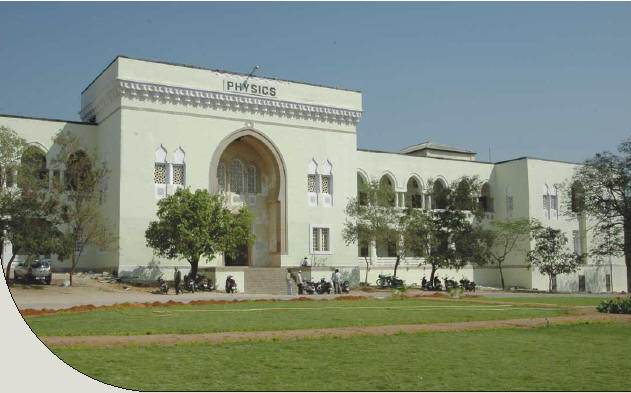
web site of
Prof G.Prasad
Department of Physics
Osmania University
 |
web site of Prof G.Prasad
Department of Physics Osmania University |
General Academic Research Work done Publications Links Contact |
Brief outline of the research work done:
1. Studies on color center phenomena in ionic crystals:
Studies have been carried out on F-band absorption, Thermoluminescence, Spectral characteristics of luminescence, dielectric properties and thermal expansion of K Cl and NaCl single crystals irradiated with x-rays or gamma rays and later excited with laser light. Studies indicate that a large concentration of color centers formed in these crystals due to irradiation can be destroyed even at room temperature when the samples are excited with laser light. The vacancies and their clusters in them bring interesting changes in dielectric and thermal expansion properties. Kinetics of F-center destruction are understood in terms of various disorders that set-in in these crystals.
2. Studies on defect properties of oxalate crystals
Cadmium and ammonium oxalate crystals are grown from gel technique. Optical absorption and impedance spectroscopy studies are carried out on these crystals. Optical absorption measurements gave an indication of perfection of the crystals. Ac impedance studies showed relaxation peaks. These relaxation peaks are due to the inherent defects and other impurities present in these crystals. The was fit to the Universal power law.
3. Studies on defect properties of geological materials:
Defect studies on rocks and minerals could be fruitfully employed to solve problems in geology. Geological dating, correlation of strata, ore prospecting, geothermometric studies are some of the application where thermoluminescence data can be used. Hence a systematic study of defect properties of natural mineral perthite which is a feldspar group member is undertaken. Thermoluminescence, Dielectric properties and thermal expansion are undertaken on these crystals. Our measurements show a redistribution of charge complexs and these charge complexes trap charged defects produced during x-ray irradiation.
4. Studies on ferroelectric polymer composite materials:
Dielectric and piezoelectric properties of ferroelectric materials show relaxation’s due to spontaneous polarization. Dielectric relaxational effects can be understood using Debye’s equations. Cole-Cole diagrams also help in obtaining deeper insight into the relaxational process. Our studies on piezoelectric polymer composites show that relaxations in piezoelectric properties can also understood with the help of Debye’s equations and Cole-Cole diagrams.
Computational work:
A model for electromechanical characterization of piezoelectric polymer composites of hexagonal structure in rectangular and circular geometry is proposed. Electromechanical coupling coefficient, wave velocities and electrical impedance have been calculated. Attempts are being made to use finite element analysis for the analysis of this problem.
5. Studies on ferroelectric materials:
Sodium meta vanadate is prepared using solid state reaction method and sintered pellets of this material is used to study AC impedance in the frequency range 100 Hz to 100 MHz and in the temperature region 30 to 600 degrees centigrade. Eventhough some of the investigators reported ferroelectric transitions in these materials and correlated these peaks to the symmetry changes observed in x-ray studies, we could not record any ferroelectric phase transition except some defect relaxation’s. These relaxation’s were fit to power law.
Bismuth layer structured compound sodium bismuth titanate (Four layered and single layered) is prepared by solid state sintering. A system of calcium and sodium bismuth titanate mixed ceramic is prepared and studied. Impedance, dielectric, pyroelectric studies are done. Electrical and electromehanical characterization of the materials is done. The electromechanical coupling coefficients and pyroelectric figures of merit are evaluated.
Various barium titanate and sodium bismuth titanate ceramic materials have been prepared through conventional solid state sintering, microwave sintering and chemical route (Pichini method) with rare earth doping at A or B or both A and B sites of ABO3 lattice. The grain, grain boundary effects are separated using impedance technique. The electrical microstructure of the materials is determined. Some of the materials showed interesting changes in the phase transition behavior including relaxor effects.
6. Studies on glassy materials:
Rare-earth doped sodium phosphate and lead chloro phosphate glasses were prepared, La, Ce, Pr and V were doped. Optical absorption, ionic conductivity and impedance spectroscopy studies were undertaken. AC Hall effect measurements are being done on these glass systems.